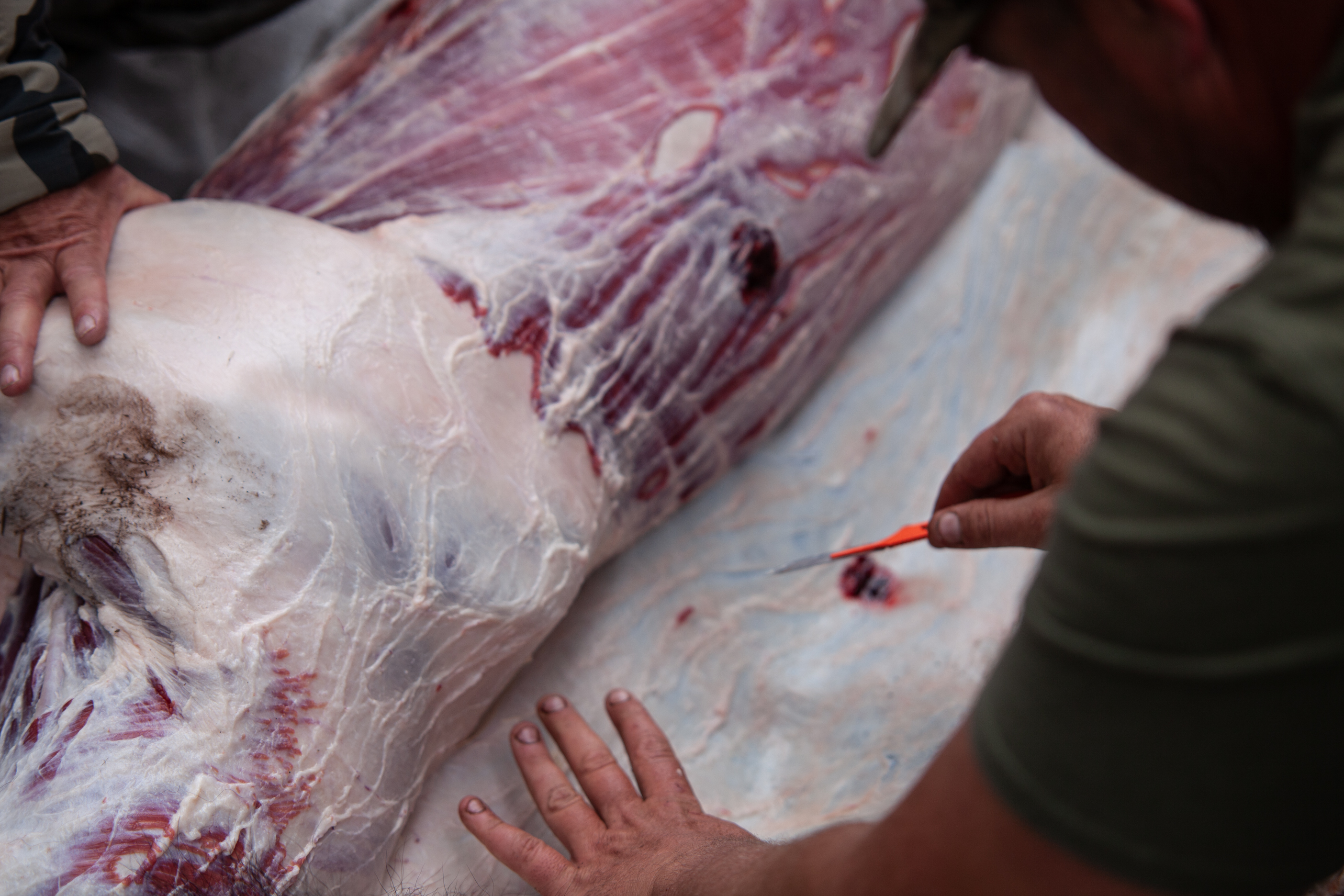One of the many divisions within the hunting community is between so-called ‘meat’ hunting and ‘trophy’ hunting. Having been a resident ‘meat’ hunter, then guide, and now outfitter, I have been on both sides of the argument. As I have gotten older — theoretically wiser — it seems to me that the two camps might not be nearly as far apart as some may think.
A quick google search will confirm how varied and emotionally charged the definitions of trophy hunting can be, but for the purpose of this article, we will ignore the semantics and look at the real-world application and its effects.
From my experience, meat hunting is the act of going hunting with the objective of taking the first legal animal of the species you can. Trophy hunting involves being more selective, which usually means passing up opportunities at legal animals and waiting for a big male of whatever species is being pursued. It is important to note that in the Yukon — as well as most jurisdictions in North America — it is illegal to waste edible meat. Despite the notion that trophy hunting consists of shooting an animal and cutting its head off to mount on a wall. Regardless of what type of hunting you claim you are doing, no edible meat can legally be wasted. Both forms of hunting have the same outcome: the animal ends up being eaten. Whether that is by the hunter, guide, or donation to indigenous elders, hospital, food bank, etc.
Some so-called meat hunters have argued that they hunt in order to ‘survive’. While this may be true for a select few of the total number of hunters, it is not true for anyone I know of in the modern world. Despite what reality shows tell us, there are grocery stores, butcher shops, and local producers throughout the Yukon Territory that would be more than happy to sell their meat. It is possible that someone out there would actually starve to death if they did not a moose this year, but if they are reading this article, they probably have the ability to buy meat. (Note: This is not saying that everyone should stop hunting and just buy farmed meat as it would cause a whole lot of other problems, but that is beyond what we are talking about right now).
Others have argued that it is cheaper to hunt meat than purchase it. Again, this could be true for a select few, but the reality for the vast majority of us is probably very different. If you think about how much you spent on your gun, ammo, optics, knives, clothing, camp gear, fuel, vehicles, etc. it starts to add up pretty quickly. Factor in your missed wages from work plus what you value your time at and $5/lb cut and wrapped side of beef is looking awfully cheap. Again, this isn’t to say wild meat isn’t a great food source — our family lives off it. I am saying that most people that think it is a ‘necessity’ for living, or that they are saving money, might need to re-evaluate their motives.
From what I’ve seen, people who think of themselves as meat hunters go out hunting because they enjoy it, and often prefer to consume wild meat. There is absolutely nothing wrong with that. Whether they like the quiet time spent out on the land, being responsible for their own food, enjoying each other’s company in camp, etc. we all do it because we want to, not because we have to.
However, there is a potential game management issue. By taking the first legal animal, the risk of overharvesting is exponentially increased. It is usually much easier to take a younger animal as they can be less weary and depending on the species, females may be legal as well. This often provides many more opportunities to harvest an animal, as opposed to waiting for a much smaller population of mature males.
There is plenty of research that suggests taking the old males of a species has the lowest impact on the population. Whenever wildlife managers are concerned about a population, their main tool is to focus harvest on older males, which sounds a lot like trophy hunting. In parts of the Yukon, you used to be able to take any moose, but as harvest pressure increased, they changed the regulations to bulls only. Now there is talk about minimum antler requirements for moose in high-pressure zones — a tool commonly implemented in higher hunting pressure areas of North America. Thinhorn sheep are another example. Regulations set in place currently only allow the harvest of full curl or 8-year-old rams, and through this, a harvestable surplus is very attainable. By being more selective about which animals are taken out of the population, the total number of animals killed goes down, and those that are killed have the least impact on the surviving population.
So if a meat hunter is concerned about game management, they will be more selective about the animals they kill. All the meat is utilized regardless. So if both groups are selectively shooting older males and eating the meat because they want to but don’t have to, just how different are they?
Perhaps this is all just a wording issue, and if we changed it from trophy hunting to selective hunting or something else with less negative connotations, we could all just get along.
Disclaimer: All my experience is in the Yukon, so that is all I can talk about. There are probably parallels to other jurisdictions, but that is for you to draw because I don’t know. As well, I have conveniently only talked about ungulates. Mostly as I am not brave enough to tackle bear hunting right now, despite numerous very good reasons to support hunting bear, including the meat. Depending on the level of hate mail received it might be the next topic.




